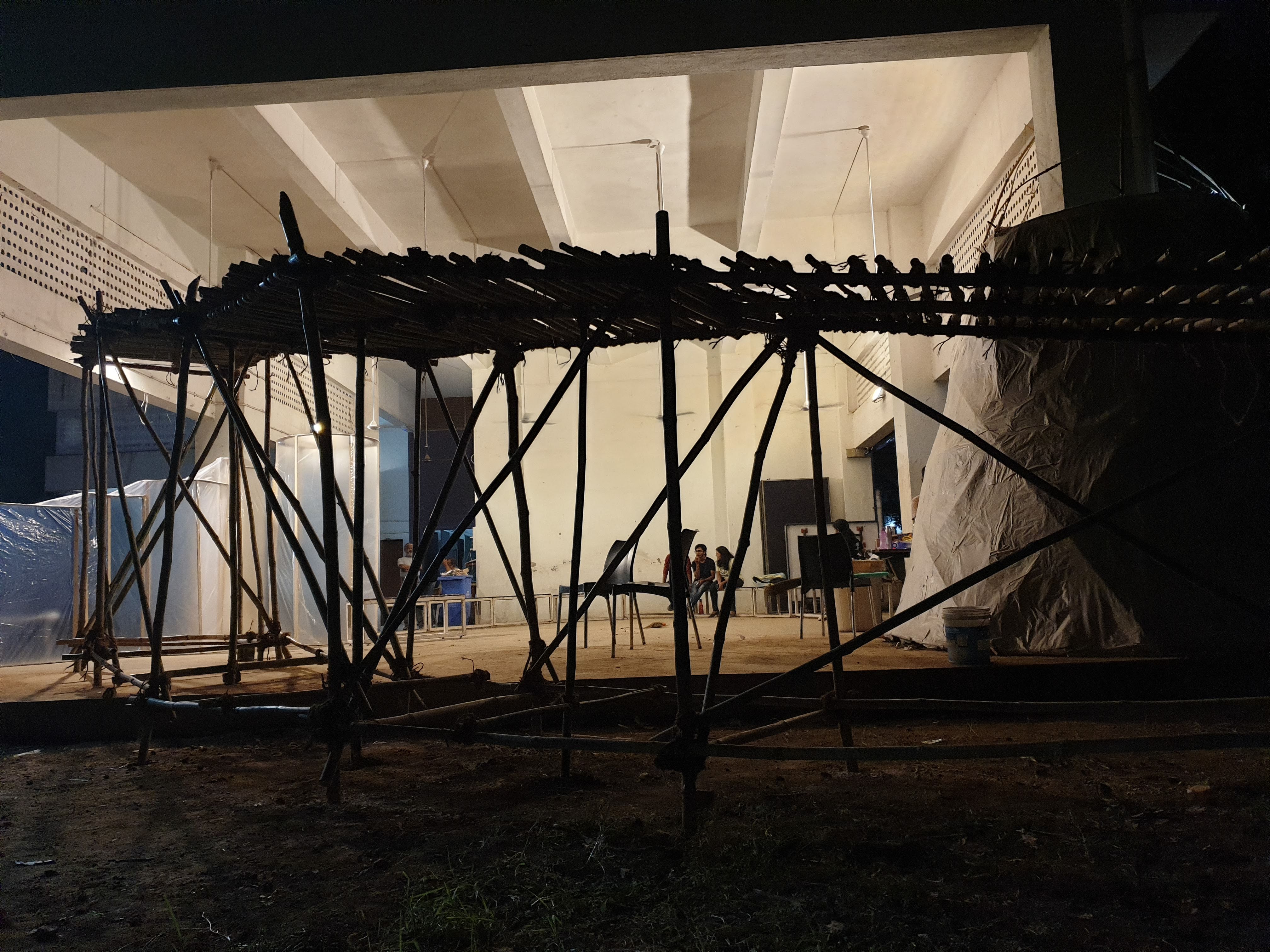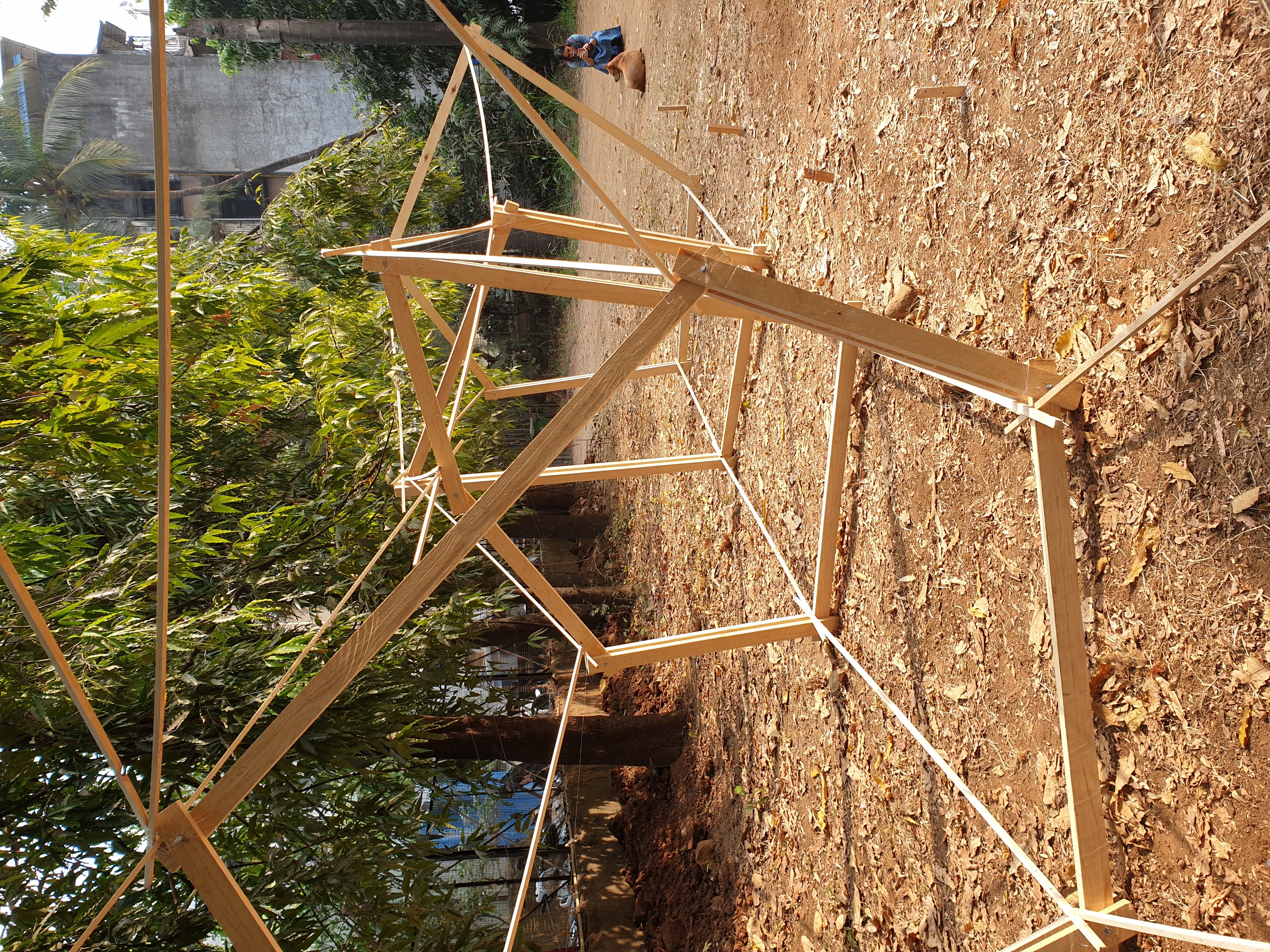Sem 1 | Orientation
Garden of Obscure Desires
Apurva Talpade
The orientation module is vital to set in motion many of the systems that are indispensable to SEA - systems of care, of thinking and working with a keen intensity, of the value of versions and rehearsals, of interrogations and analyses. This academic year, in December of 2022, we were able to grasp these a little nearer and a little more boldly than in the previous year, returning tentatively to the premises after a year and a half of teaching/learning-from-home as we were.
The poems of Andre Breton were used for the first year foundation workshop. One of the central figures in the setting up of surrealism as a bonafide new movement in art in the 1920s and onwards, Breton’s poems are vague/suggestive, dubious/subjective in the manner of the movement itself. The course drew on them for their ability to provoke imagery and for their thorough departure from being read in glib and easy ways. It is worthwhile to note that the Form and Experience course in the previous year used the poetry of Arthur Rimbaud. Forceful and impassioned and scathing and difficult, we (I) struggled with setting up coordinates to work with these poems, which asked for deep readings, turning upside down problematic assumptions, and in doing so, held a mirror to the self first and foremost, in the untangling of the skeins of the unsettled young man’s mind. Could this perhaps explain why we chose another Surrealist poet to work with so soon after?
We choose to reflect through a procession of questions:
What questions get asked through these readings?
What do the poems suggest? What is the experience of those poems?
This is deliberated upon very carefully, in groups, in order to foster friendships, that the working together and thinking together will set up, for the very first time, systems within which to fight, cooperate, resolve, argue, etc etc
A number of other questions follow almost immediately after, set up by the imagery and the urging of the fragments that were latched on to..
What is romance? What is childhood? What is frightful? What is beguiling?
Something larger perhaps than the vampires and doves and sensuous women waiting by windows? Breton was anything but obvious, always oblique, always roundabout, an answer begetting six other questions, spawning thirty six other readings. Drawing you ever further, without resolution, but demanding a very real engagement.
What gets produced from these engagements?
Forms that leave you:
- Held in the whirl of a tornado, speed and stillness becoming the same.
- Dwarfed among fleshy petals.
- Climbing sixteen iterations of stairways that rise, turn, twist, and start at the beginning, at their first stair.
- In between a space of six stacked portals, tenuously anchored to the ground.
- Between the folds of a column, both solid and imposing / furry and yielding.
What are these new forms that are being made and encountered?
In the spirit of the surreal, here explored as an affront, a direct confrontation to the uncomplicated images and insincere meanings of the spaces we ascribe as being all things spaces should be - ordered, lofty, and that greatest-of-all-surreal-mysteries - beautiful!, from a mining of the memory, and a dissection of the interrelationships of word and image, are these forms that look to rebuild and reconfigure what form and space could be, and how we might behave in them.
What are the processes through which this gets set up?
A strict one - of intensive readings, leading to discussions within assigned groups as well together, as a class, to cross examine interpretations. The making of models, scalar iterations to work out and test suggestions. And finally, a concerted effort to overcome an unfamiliarity with tools, with material, and with each other, fomented by late evenings working in the space of the school, with some supervision of teachers and technicians, and the somewhat less stern inspections of the puppies that have claimed the school grounds.





